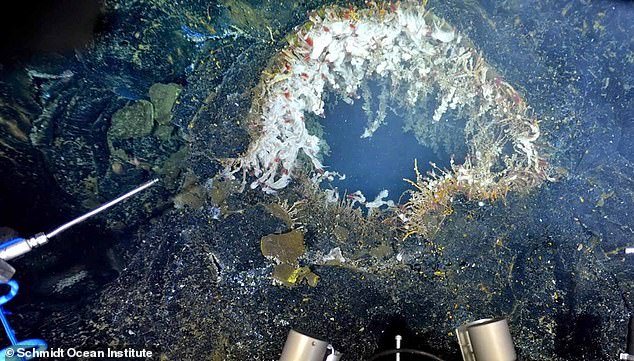Uncovering the Activity of Axial Seamount
A significant underwater volcano, known as Axial Seamount, is currently experiencing a surge in seismic activity off the coast of Oregon. This has raised concerns among scientists who are closely monitoring the situation. The volcano, located approximately 300 miles from the coastline and nearly a mile beneath the ocean’s surface, is the most active in the Pacific Northwest.
Scientists have observed an increase in the number of earthquakes occurring daily, with recent reports indicating up to 300 quakes per day. Although these tremors are typically small, measuring around magnitude 1 or 2, their frequency is a clear indicator that magma is moving through the volcano’s cracks.
William Wilcock, a professor of oceanography at the University of Washington, emphasized the importance of this seismic activity. He noted that if this volcano were located near populated areas, there would be immediate evacuations. The current situation highlights the potential for an eruption, similar to the one witnessed in 2015, which saw a dramatic increase in earthquake frequency.
Predicting the Unpredictable
The movement of magma through the volcano’s complex pathways makes this event more challenging to predict. Unlike previous eruptions, the inflation process has been less uniform, leading to uncertainty about when the next eruption might occur. While some warning signs are expected, volcanoes are known for their unpredictability.
Researchers believe the eruption could happen anytime soon, but it is more likely to occur by July 2026 or as late as May 2027. When the eruption does occur, the number of underwater earthquakes is anticipated to rise sharply, potentially reaching up to 10,000 within a 24-hour period.
Monitoring and Understanding the Volcano
At the heart of Axial Seamount lies a magma chamber, a reservoir of molten rock half a mile beneath the seafloor. As magma rises, it inflates the chamber, causing stress on the surrounding rock and triggering swarms of small earthquakes. Scientists have deployed an array of ultra-sensitive sensors, including underwater seismometers and GPS stations, to monitor every movement beneath the waves.
Inflation, the slow swelling of the volcano as magma fills the chamber, is another critical factor. In 2015, the volcano was inflating at a rate of two feet per year, but now it’s rising at about eight inches annually. This change has made predictions more difficult, as the inflation has been erratic, with periods of rapid growth followed by sudden stops.
Historical Eruptions and Their Impact
When Axial Seamount erupted a decade ago, it produced 450-foot-thick lava flows and formed massive structures known as pillow lavas. These bulbous tubes of molten rock solidify quickly in seawater. The eruption also triggered roughly 8,000 earthquakes, causing the ocean floor to sink nearly eight feet.
This time, there is a possibility that lava could erupt from a dike, a crack that pushes magma sideways through the Earth’s crust rather than directly out of the seafloor. Emilie Hooft, a geophysicist at the University of Oregon, explained that if this occurs, the magma could travel laterally and erupt somewhere unexpected.
Implications for Nearby Volcanoes
Despite the remote location of Axial Seamount, an eruption would not directly threaten human life. However, scientists are closely watching it due to the knowledge gained from studying this volcano. This information could help predict eruptions from nearby volcanoes that pose a risk to people.
For instance, Mount Rainier, located just 240 miles from Axial Seamount, is one of the most active volcanoes in the Pacific Northwest’s Cascade Range. Experts suggest that a devastating eruption remains a real possibility in the near future. This huge, active stratovolcano looms over nearly 90,000 people living in cities such as Seattle, Tacoma, and Yakima in Washington, and Portland in Oregon.







